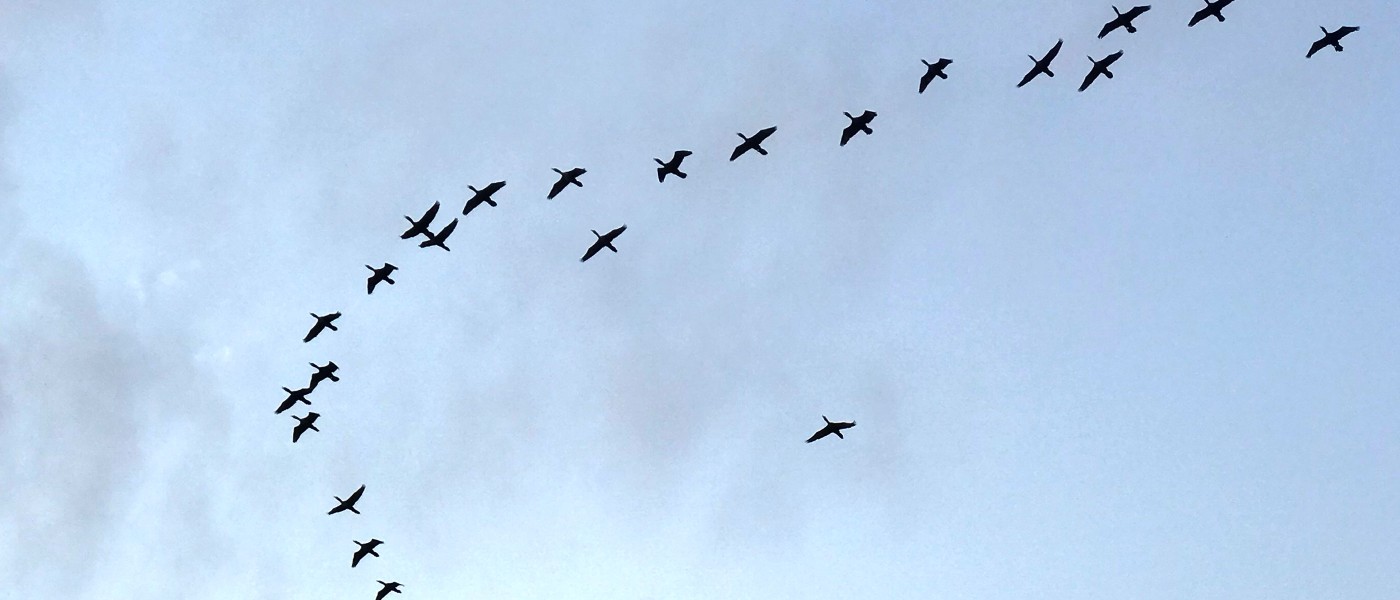Journey into Bird Migration
Each spring and fall, millions of migratory birds make extensive journeys north and south. Many stop through New York City to rest, refuel, and nest. The city’s gardens, parks, and greenspaces have become crucial stopover sites—in spring, ospreys flock to Jamaica Bay and ruby-throated hummingbirds feast among the nectar-rich flowers right here at Brooklyn Botanic Garden.
In recognition of World Migratory Bird Day, we’ve gathered some resources you can explore to learn more about the when and how of the fascinating phenomenon of bird migration—and what you can do to help support these birds on their journeys.
RESOURCES
Spring and Fall Migration in New York City
New York City is situated directly in the Atlantic Flyway, the migration corridor used by birds in the spring and fall seasons. Here, NYC Parks & Recreation lists common migratory birds and where they can be found, such as the piping plovers that nest in Rockaway Beach each spring. You can also find tips on keeping migratory birds safe during their stay, like making your windows bird-safe and reporting any injured birds.
nycgovparks.org/learn/wildlife-in-new-york-city/spring-and-fall-migration
BirdCast
With charts and maps using weather surveillance radar data, BirdCast predicts and monitors the real-time nocturnal migration of birds across the country. You can explore live and historical migration data—including the number of birds in flight, altitude, and flight direction and speed—for any state or county in the contiguous U.S. BirdCast also provides a list of bird species you’re most likely to see at this time of the year.
birdcast.info
Lights Out
Most migrating birds, especially songbird species, make their journeys at night. This can be especially risky when flying over big cities, where light pollution from bright, artificial light can throw birds off course and cause them to circle in confusion. Reflections from artificial light can also cause birds to collide with buildings. Audubon’s Lights Out program is a national effort to persuade building owners and managers to shut off excess bright lighting during migration season.
audubon.org/lights-out-program
A World on the Wing: The Global Odyssey of Migratory Birds
Scott Weidensaul (W.W. Norton & Company, 2021)
Ornithologist Scott Weidensaul brings bird migration out of the abstract and into the concrete. A World on the Wing illuminates the immense scale at which birds exceed physical limits, accomplishing navigational and physiological feats with exceptional endurance. A treasure trove of fun facts, the book includes stories of Arctic terns who travel an astonishing 57,000 miles a year and birds who fly nonstop for up to nine days at a time, taking “micronaps” to cope on their journeys. Weidensaul also focuses on the urgent work that needs to be done to protect these extraordinary species, particularly with urban land conservation. Running throughout is the author’s reverence for migratory birds, “which by obeying their ancient rhythms knit up the scattered and beleaguered wild places of the world into a seamless whole through the simple act of flight.”
bookshop.org/books/a-world-on-the-wing-the-global-odyssey-of-migratory-birds-9780393882414/9780393608908
bklynlibrary.org/item?b=12384941
Celebrate World Migratory Bird Day at Brooklyn Botanic Garden on Saturday, May 14, 2022, and enjoy Biophony, a walkabout listening experience featuring new musical works inspired by birds.


